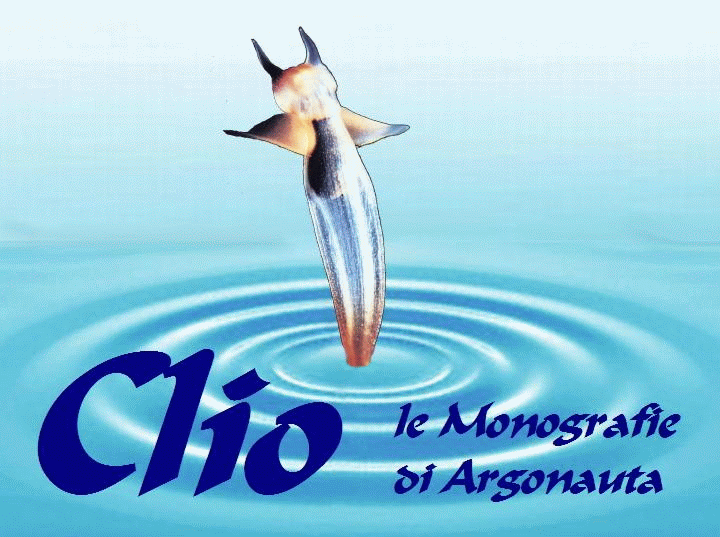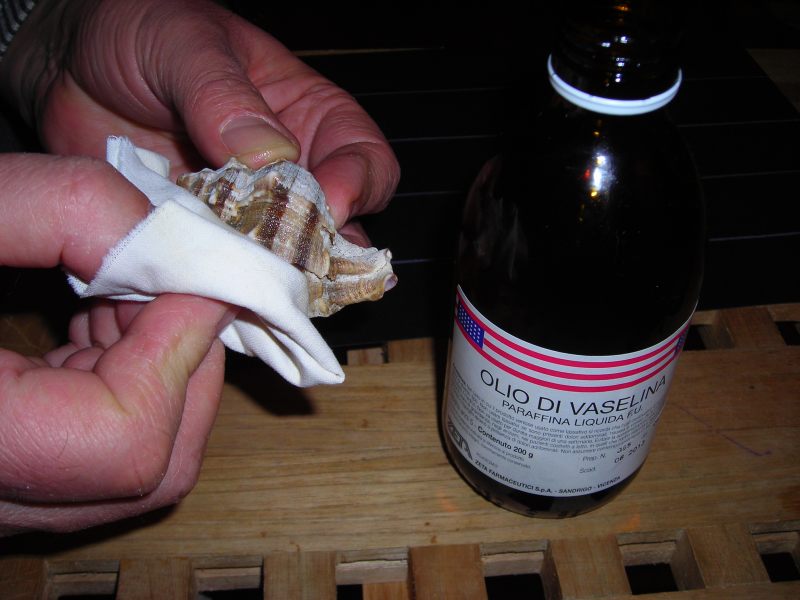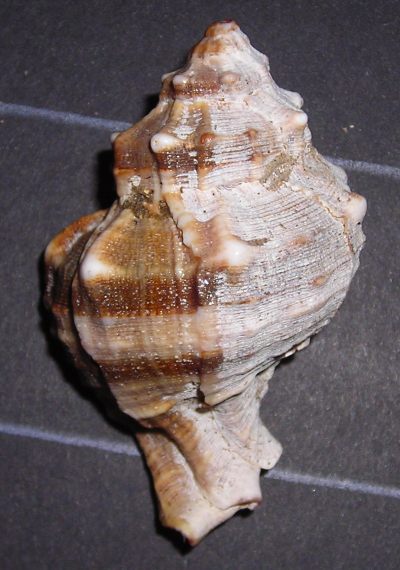
Clio supplemento a Argonauta n. 7-12 2011
 |
 |

Pulire le conchiglie
Se giri nei forum o cerchi in internet, vedrai che si parla molto di come pulire le conchiglie, con quale metodi e tecniche: ciascuno ha le sue preferenze. Quindi noi possiamo darti solo dei suggerimenti. Come avrai letto la conchiglia è fatta di calcare: si tratta di un minerale che viene corroso dagli acidi e, quindi, da tutti i detersivi. Per pulire le conchiglie la cosa migliore è l'acqua corrente, quella del rubinetto. Se nella conchiglia ci sono residui organici, te ne puoi accorgere dal cattivo odore, il sistema migliore è quello di lasciarla in normale acqua per qualche giorno e poi lavarla di nuovo scuotendola energicamente per far uscire ciò che c'è dentro.  Quando la conchiglia è pulita puoi farla asciugare ma, attenzione, mai al sole che può sbiadire i suoi colori esterni. Se vivi in campagna e sei in un posto dove abbonano le formiche, puoi lasciare che siano loro e altri piccoli insetti aripulire bene bene la tua conchiglia, bastano due o tre settimane. Metti il tuo raccolto sotto un cespuglio in zona protetta e lascia che la natura faccia il resto. Quando la conchiglia è pulita puoi farla asciugare ma, attenzione, mai al sole che può sbiadire i suoi colori esterni. Se vivi in campagna e sei in un posto dove abbonano le formiche, puoi lasciare che siano loro e altri piccoli insetti aripulire bene bene la tua conchiglia, bastano due o tre settimane. Metti il tuo raccolto sotto un cespuglio in zona protetta e lascia che la natura faccia il resto.Una volta che la conchiglia è pulita e asciutta puoi migliorare il suo aspetto e la sua conservazione usando un olio non acido. L'olio di vaselina è ottimo e una bottiglietta acquistata in farmacia può durarti anche per molti anni. Nell'esempio in queste immagini puoi vedere un Hexaplex trunculus sulla sinistra piuttosto sbiancato dal sole e, sulla destra la stessa conchiglia dove per metà è stato passato l'olio. Potrai notare come il colore si ravviva e la conchiglia appare molto più bella. L'olio infine ricopre la superficie proteggendola dai vari agenti atmosferici. |
To clean the shellsIf you are shooting in the forums or search the Internet, you'll see that there is much talk about how to clean the shells, with what methods and techniques: each has its own preferences. So we can only give suggestions.As you read the shell is made of limestone: it is a mineral that is corroded by acids and, therefore, from all detergents. To clean the shells the best thing is the running water, than tap water. If there are organic compounds in the shell, you might as noticing the smell, the best way is to leave it in plain water for a few days and then wash it again, shaking it vigorously to release what's inside.  When the shell is clean you can let it dry, but be careful, never in the sun that can fade its colors outside. If you live in the countryside and you subscribe to a place where the ants, you can let them clean up and other small insects very well your shell, just two or three weeks. Put your crop under a bush in a conservation area and let nature do the rest. When the shell is clean you can let it dry, but be careful, never in the sun that can fade its colors outside. If you live in the countryside and you subscribe to a place where the ants, you can let them clean up and other small insects very well your shell, just two or three weeks. Put your crop under a bush in a conservation area and let nature do the rest.Once the shell is clean and dry you can improve its appearance and its conservation using a non-acidic oil. The mineral oil is excellent and a bottle purchased at pharmacies may durarti for many years. In the example in these images you can see a Hexaplex trunculus bleached by the sun rather than on the left and the right half of the same shell where the oil was passed. You will see that the color comes alive and the shell is much more beautiful. The oil eventually covers the surface, protecting it from various weather conditions |
